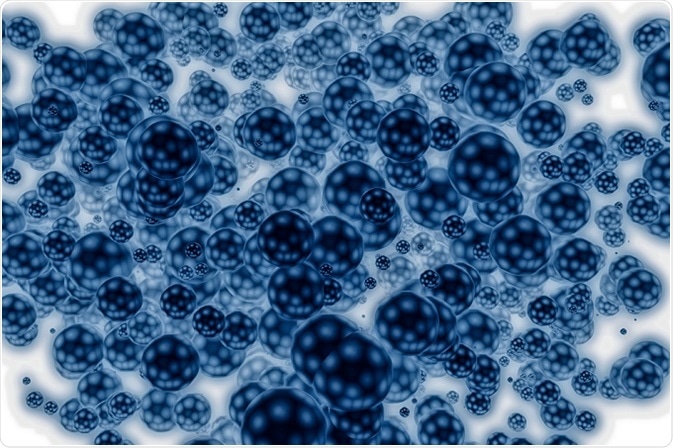Modern medicine has evolved rapidly over the past century, and the development of safe and effective drugs has been a key factor in reducing death and disability from diseases which were once a death sentence. Advances in vaccination led to the complete elimination of small pox by 1990, and as of 2016, polio cases have been reduced by 99% worldwide as well.1,2 Pharmacological agents, such as statins, chemotherapeutics, and anti-retroviral therapies have made incredible progress in treating heart disease, cancer, and HIV/AIDS.
However, despite these remarkable advances, we still live in a world devastated by a vast number of debilitating diseases. Nearly 600,000 people died of cancer in 2016 in the United States alone.3 Researchers strive every day to improve treatment success in cancer and other diseases by attaining a greater understanding of disease causes, symptoms, and pathological progression, and using that information to develop safer and more effective drugs.
Unfortunately, even effective drugs may not achieve treatment success if they cannot be administered in the right location, at the right time. Advances in diagnosis and drug delivery are critical to the success of disease treatment, and these areas have offered some of the greatest challenges to researchers seeking to cure cancers. Cancer cells are host cells, making them very difficult to destroy without damaging the patients’ healthy tissues as well.

Image Credits: GiroScience/shutterstock.com
Many researchers hope that by developing a method to deliver the drugs to the exact location of a tumor, and to control the dose and timing of release may improve the safety and efficacy of these drugs, offering greater hope to patients and families in need. Hydrogels are one method that has been an area of great interest and research in recent years.4
In order to achieve this goal, Dr. Sun-Hee Cho and colleagues at Sungkyunkwan University in Suwon, South Korea, developed a novel collagen-based hydrogel that can be filled with imaging probes and pharmacological agents and then injected into a patient.5 This new solution would allow doctors to diagnose and carefully monitor tumor progression with magnetic resonance imaging (MRI), and administer drugs directly to the tumor site, reducing systemic toxicity.
What makes Dr. Sun-Hee’s hydrogel so unique, is the incorporation of poly(γ-glutamic acid) (γ-PGA), a multifaceted anionic polymer electrolyte, into the collagen solution. The addition of this polymer altered the biochemical properties of the collagen hydrogel, allowing it to be fluid at room temperature, but solidify once inside the body. Most previously described collagen-based hydrogels are extremely viscous at room temperature, making preparation and delivery of the solution difficult.6
This advancement makes it possible to prepare an injectable hydrogel solution with imaging probes, nanoparticles, and pharmacological agents, which will become gelatinous at the site of injection. Thus, systemic toxicity can be reduced as the hydrogel remains only in the area near the tumor.
Importantly, the researchers used a Bruker Avance DMX600 nuclear magnetic resonance (NMR) spectrometer to show that, once heated above body temperature, the gel becomes a flowing solution once again. This allows doctors to control the release of drugs and imaging probes within the body, non-invasively, using near-infrared (NIR) light to activate the fluorophore indocyanine green (ICG). ICG, added into the hydrogel prior to injection, heats up when it absorbs NIR light, thus raising the temperature of the hydrogel and releasing drug molecules and imaging probes into the area surrounding a tumor.
By using the Bruker AVANCE Avance DMX600 spectrometer to perform NMR, Dr. Sun-Hee and colleagues were able to determine the dynamic photothermal properties of their novel hydrogel. NMR is a highly versatile technology, allowing the determination of not only hydrogel, but also protein structures in solution, which is not possible with other technologies, such as x-ray crystallography.7
NMR allows researchers to obtain a dynamic, physiologically relevant understanding of the properties and conformation(s) of a solution or protein. The versatility of NMR lends it a wide range of possible applications, including disease diagnosis, drug delivery, rational drug development, and more.
Dr. Sun-Hee and colleagues have demonstrated the importance of this technique with their study describing a novel hydrogel for the delivery of drugs and imaging probes. “The injectable and photoresponsive collagen/γ-PGA hydrogels developed in this study may be useful for drug delivery, tissue engineering, and cell-based cancer therapy,” the researchers conclude.
References:
- "The Smallpox Eradication Programme - SEP (1966-1980)." WHO. World Health Organization, n.d. Web. 27 June 2017. https://www.who.int/.
- "Does Polio Still Exist? Is It Curable?" World Health Organization. World Health Organization, n.d. Web. 27 June 2017. http://www.who.int/features/qa/07/en/.
- "Cancer Statistics." National Cancer Institute. N.p., n.d. Web. 27 June 2017. https://www.cancer.gov/about-cancer/understanding/statistics.
- Calo E, Khutoryanskiy VV. Biomedical applications of hydrogels: a review of patents and commercial products. Eur Polym J. 2015;65:252–267.
- Cho SH, Kim A, Shin W, et al. Photothermal-modulated drug delivery and magnetic relaxation based on collagen/poly(γ-glutamic acid) hydrogel. Int J Nanomedicine. 2017;12:2607-2620.
- Brinkman WT, Nagapudi K, Thomas BS, Chaikof EL. Photo-cross- linking of type I collagen gels in the presence of smooth muscle cells: mechanical properties, cell viability, and function. Biomacromolecules. 2003;4:890–895.
- Ambrus, Attila. "Comparison of NMR and X-ray Crystallography." Comparison of NMR and X-ray Crystallography.
About Bruker BioSpin - NMR, EPR and Imaging

Bruker BioSpin offers the world's most comprehensive range of NMR and EPR spectroscopy and preclinical research tools. Bruker BioSpin develops, manufactures and supplies technology to research establishments, commercial enterprises and multi-national corporations across countless industries and fields of expertise.
Sponsored Content Policy: News-Medical.net publishes articles and related content that may be derived from sources where we have existing commercial relationships, provided such content adds value to the core editorial ethos of News-Medical.Net which is to educate and inform site visitors interested in medical research, science, medical devices and treatments.